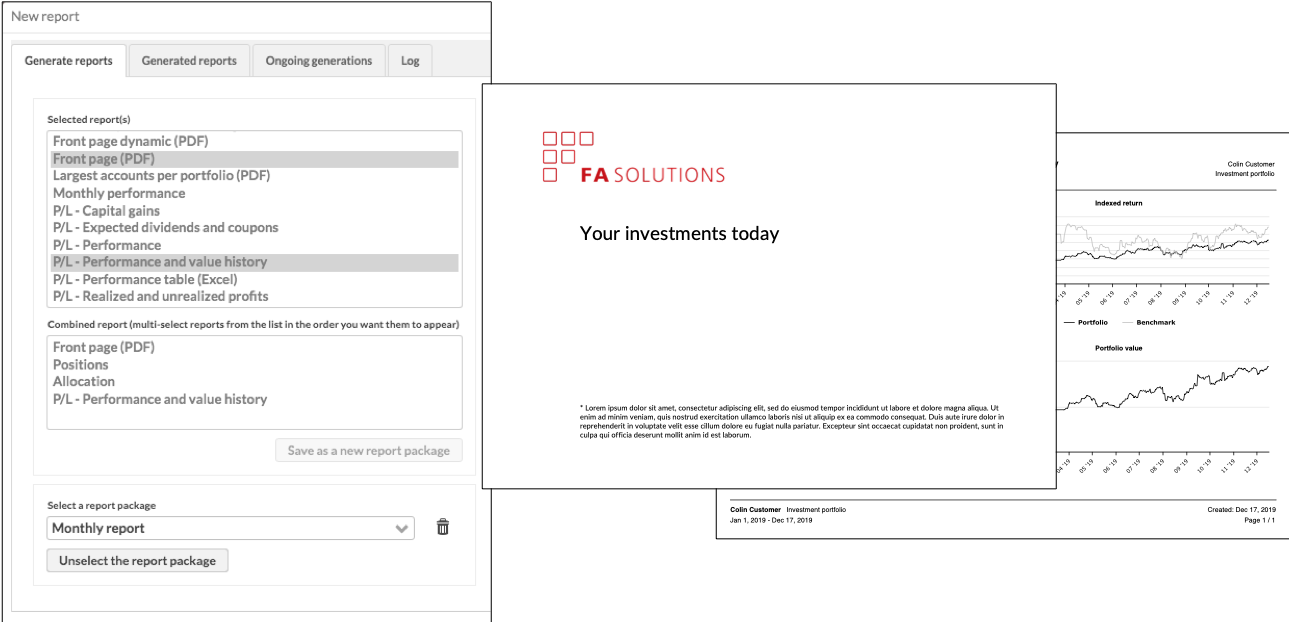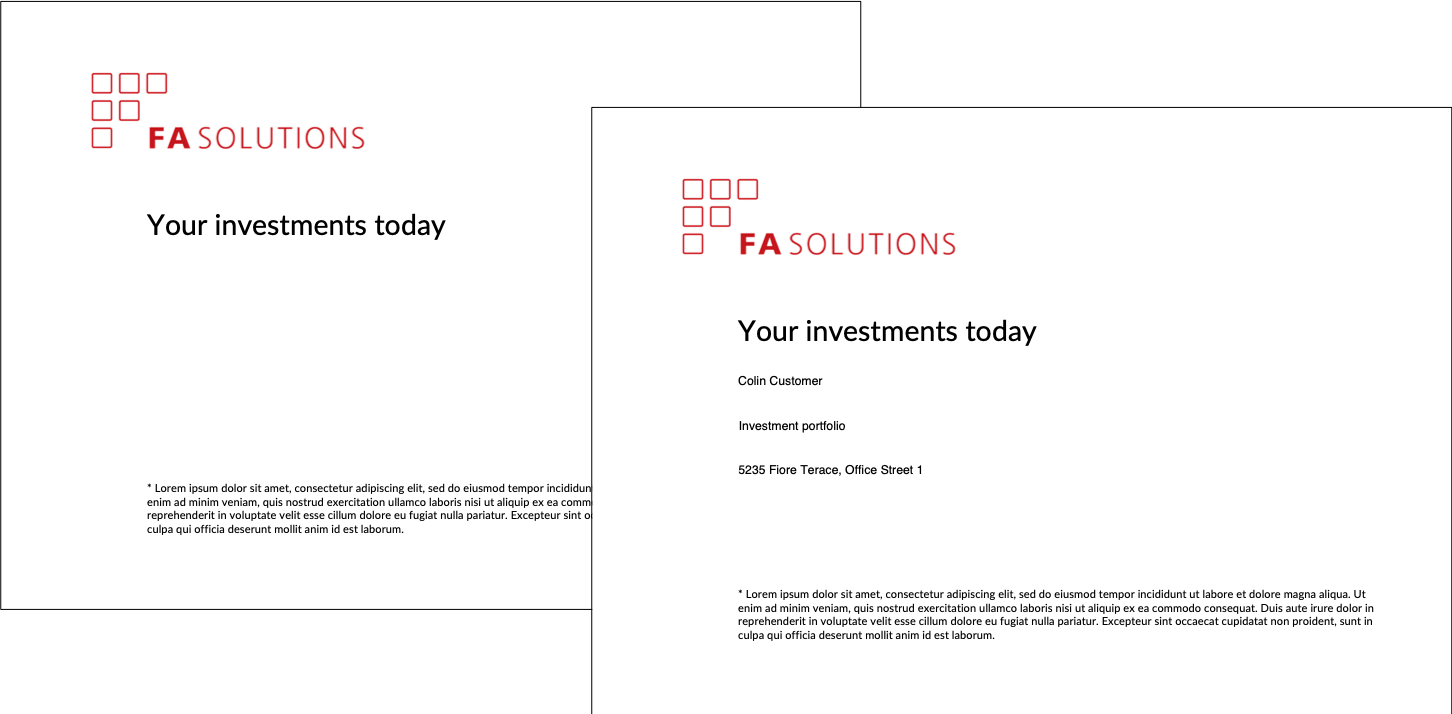PDF report templates
PDF report templates allow you to build your own static or dynamic PDFs, and include those as part of your combined reports and report packages. This provides you with a powerful tool to extend your reporting, and complement your reports for example with your own front pages, summaries or marketing insights - or any other custom pages you would want to use.
Generating a report based on a report template
Your own PDFs appear in the Report window among all other available reports, and you can use them as any other report you generate from the system.
You can make the most use of your PDFs by including them in a combined report or a report package.Your static PDFs can include any text or graphics of your choice, and are always generated as they are. Alternatively, you can build dynamic PDFs through embedding dynamic keys within you PDFs to fill in basic customer or portfolio information, such as names, addresses or other details, within your own PDF. For more information, see Creating static and dynamic templates.

Managing PDF report templates
Managing your PDF report templates is easy, and you can do it directly through these steps:
Build your PDF files outside of FA - you can use any tool to build the PDF template outside of FA.
Upload your PDF templates to the /Reports folder in Administration view’s Document management.
After uploading your PDF report templates to document management, your PDF template will appear in the Report window among all other reports. PDF templates are shown with the name of the PDF document you uploaded into Document bank (without the file extension .pdf) - if you want to change the name of your template, rename the PDF file you uploaded. PDF report templates are indicated in the report listing with the suffix (PDF) after report template name.
You can only use PDFs as report templates - any other types of files you upload into the /Reports folder are filtered away and are not available in the Report window.
When you delete a PDF in /Reports folder in Documents management, you can still successfully create a report package without the deleted report, but the report itself will disappear from the Selected reports list. Renaming the PDF will delete it from Documents and the report package, and the old document is replaced with a "new" document with the new name you gave it. Thus, you need to add this renamed document again from the reports list to the report package in order to generate the whole package successfully.
Creating static and dynamic templates
Your PDF report templates can be either static or dynamic, allowing you to either easily define PDF templates with fixed content, or personalize them with information fetched from your customer and / or your customer's portfolios.

Static PDF report templates can include any text or graphics of your choice. Static templates are most suitable for example to static front pages with your logo and generic details, marketing insight, general terms and conditions, and other pages that should contain the same information for all customers.
To build a static PDF, you can use any tool of your choice - for example, you can lay out your text and graphics in Word, and save it as a PDF.
Static templates are always generated as they are (i.e. the template you uploaded to the /Reports folder is attached as is as part of your report), and don't react to the customer or portfolio you are generating the template for.
Dynamic PDF report templates can include any text or graphics of your choice, but they can also contain basic customer or portfolio information, such as names, addresses or other details, within your own PDF. Dynamic templates are most suitable when you want to personalize a document with your customer's details, for example to print out the customer's address to the front page of your report package or when you want to attach basic customer and portfolio information as a part of your report.
To build a dynamic PDF, embed dynamic keys within your PDFs to fill in customer and portfolio information. To do this, you need a PDF editor that can allows creating form fields, such as Adobe Acrobat:
Build a PDF file and add text fields into it in the PDF editor.
Find the dynamic key you need in the Reporting preferences. Keys are listed under Contact and Portfolio, and allow you to use basic contact and portfolio information.
Copy the value from the Key column.
Add the key as the name of the text field you want to fill in with the value.
When the report is generated, dynamic keys are filled in based on the contact or portfolio the report is generated for. For example, the field named "contact.name" turns into the name of the contact you are generating a report to.
For different selections in the report window, "contact" and "portfolio" keys work a bit differently. For example, keys "contact.name" and "portfolio.name" would fetch in the below situations:
"One report" against 1 customer with 1 portfolio => Keys fetch both the chosen contact name and portfolio name once.
"One report" against 1 customer with several portfolios => Keys fetch the chosen contact name once and all contact's portfolios (i.e. no duplicate contact names are printed because all portfolios have the same contact).
"Report per customer" against 2 customers of which one has 1 portfolio and the other has several portfolios => Separate reports are generated where one report shows the info as in example 1 above, and the other report as in example 2.